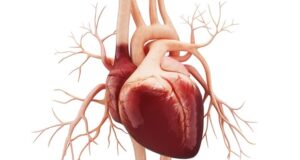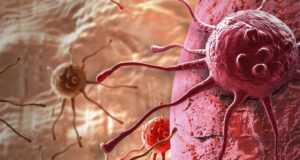Study reveals how neurodevelopment and mental health influence unhealthy eating patterns during adolescence.
 Study: Relationships of eating behaviors with psychopathology, brain maturation and genetic risk for obesity in an adolescent cohort study. Image Credit: Dasha Petrenko/Shutterstock.com
Study: Relationships of eating behaviors with psychopathology, brain maturation and genetic risk for obesity in an adolescent cohort study. Image Credit: Dasha Petrenko/Shutterstock.com
In a recent study published in Nature Mental Health, a group of researchers investigated the neurobiological mechanisms linking eating behaviors, genetic risk for obesity, and trajectories of psychopathology and brain maturation in adolescents.
Background
Eating disorders (EDs) are severe psychiatric conditions with high mortality rates and significant impacts on quality of life. Their rising prevalence in adolescence highlights the need for early detection and intervention.
Key risk factors include cognitive restraint (CR), emotional eating (EE), and uncontrolled eating (UE), linked to disordered eating, negative body image, obesity, and higher body mass index (BMI).
Genetic studies associate obesity-related variants with these behaviors. At the same time, neurobiological findings reveal that brain maturation and psychopathology, such as internalizing problems (IPs) and externalizing problems (EPs), contribute to ED risk. Further research is needed to clarify these complex relationships.
About the study
Participants in this study were part of Imaging Genetics (IMAGEN), a longitudinal genetic and neuroimaging cohort of adolescents from eight centers in England, Ireland, France, and Germany. The study received ethical approval from local committees, with written informed consent from participants and their guardians.
Designed to explore genetic and neurobiological factors influencing behavior, the cohort primarily included participants of European ancestry based on self-reports, with statistical approaches excluding non-European ancestries during genetic analyses.
Data on emotional and behavioral problems were collected using the Strengths and Difficulties Questionnaire (SDQ) at ages 14, 16, 19, and 23. Neuroimaging data (N = 949) were acquired at ages 14 and 23 while eating behaviors were assessed at age 23 (N = 996) using the Three-Factor Eating Questionnaire (TFEQ).
The TFEQ measured CR, EE, and UE and validated them across European populations. ED symptoms, including dieting, binge eating, and purging, were self-reported via the Development and Well-Being Assessment. Emotional and behavioral problems were analyzed longitudinally using IP and EP subscales of the SDQ.
High-resolution magnetic resonance imaging (MRI) data were processed with rigorous quality control, segmentation, and normalization protocols. Statistical analyses included K-means clustering for eating behavior groups and multivariate mediation models to assess the interplay of genetic risk, brain maturation, and psychopathology.
Study results
A total of 996 participants (478 male, 518 female) with complete TFEQ scores at age 23 and at least one SDQ measure at ages 14, 16, 19, and 23 were included in this analysis. K-means clustering identified three distinct eating behavior groups: healthy eaters (HEs, N = 423), restrictive eaters (REs, N = 324), and emotional/uncontrolled eaters (E/UEs, N = 249). Stability and validity tests confirmed this classification, with Jaccard similarities ranging from 0.75 to 0.83.
The HEs scored low on all TFEQ subscales. REs exhibited the highest CR scores, marked by behaviors like consciously limiting food intake and avoiding foods associated with weight gain, and also scored higher than HEs on UE. E/UEs displayed the highest EE and UE scores, characterized by eating in response to emotions like loneliness or anxiety and frequent binge-eating episodes.
E/UEs also had elevated CR compared to HEs. RE and E/UE groups included more females, while HEs had a higher proportion of males. Differences in BMI polygenic scores (PGSs) were observed, with REs and E/UEs scoring higher than HEs.
Longitudinal analyses of ED symptoms from ages 14 to 23 revealed significant group differences. REs showed consistently higher dieting levels than HEs but no age-related interaction effects. In contrast, E/UEs exhibited age-related increases in dieting, binge eating, and purging, most notably between ages 14 and 23.
Emotional and behavioral problems analyzed using latent growth curve models (LGCMs) revealed that REs and E/UEs experienced higher IPs over time compared to HEs. EPs decreased across all groups, though E/UEs started with significantly higher EP levels at age 14.
Brain maturation analyses showed group-specific patterns in gray matter volume (GMV), cortical thickness (CT), and sulcal depth (SD). REs exhibited smaller GMV reductions in the left cerebellum, while E/UEs showed less reduction across multiple brain regions, including the frontal and parahippocampal gyri.
Mediation analyses suggested that differences in brain maturation partially mediated the relationship between psychopathology and eating behaviors. Genetic influences, particularly BMI PGSs, were linked to protracted GMV reductions, further influencing eating behavior profiles.
Conclusions
This study used a longitudinal, multivariate framework to investigate the complex relationships among eating behaviors, genetic factors, psychopathology, and brain development during adolescence. Adolescents with unhealthy eating patterns, including restrictive eaters (REs) and those experiencing episodes of overeating or undereating (E/UEs), were found to have higher body mass index (BMI) and BMI polygenic scores (PGSs), indicating a genetic predisposition to higher BMI.
These groups also exhibited elevated levels of internalizing and externalizing psychopathologies, increasing tendencies toward dieting and binge eating, and slower brain maturation, particularly in the cerebellum and prefrontal cortex. The study revealed that smaller reductions in cerebellar volume mediated the link between higher BMI PGS and restrictive eating behaviors.
In contrast, other brain regions mediated the relationship between externalizing psychopathology and episodes of overeating or undereating. These findings underscore the intricate interplay of genetics, neurodevelopment, and mental health in influencing eating behaviors during adolescence.



